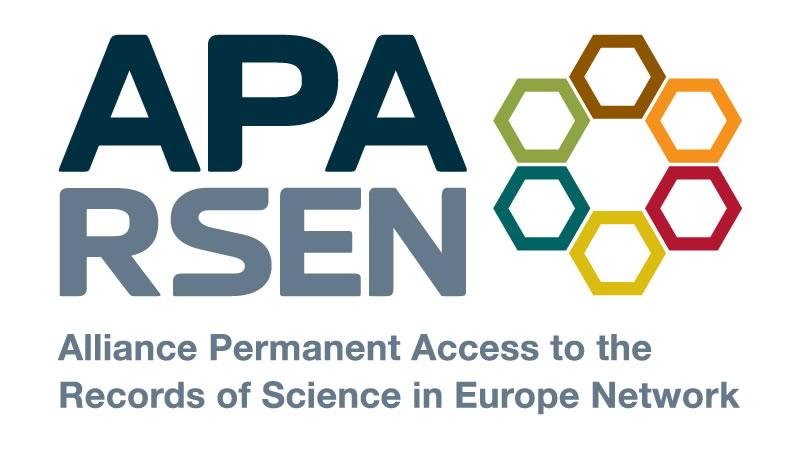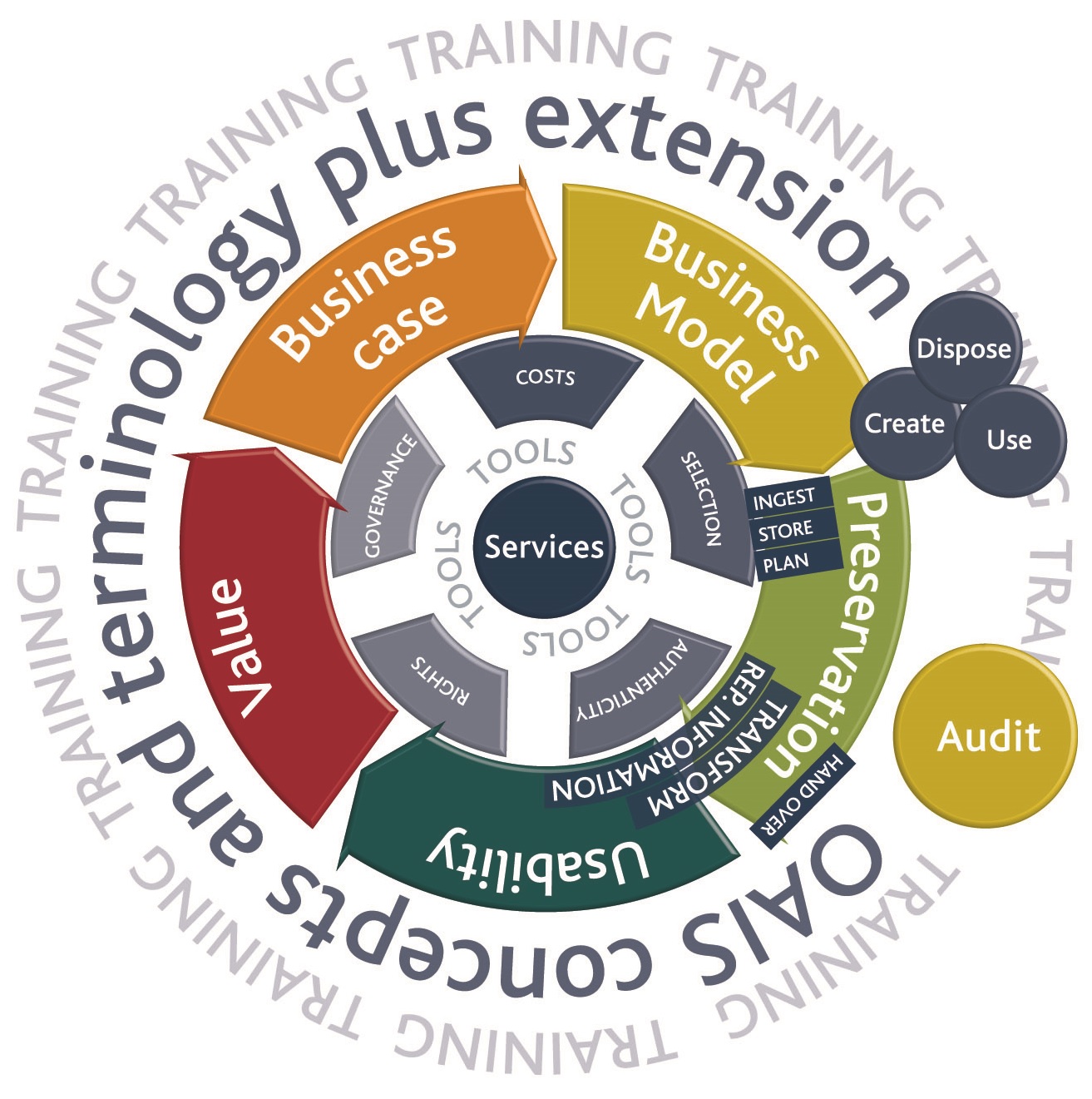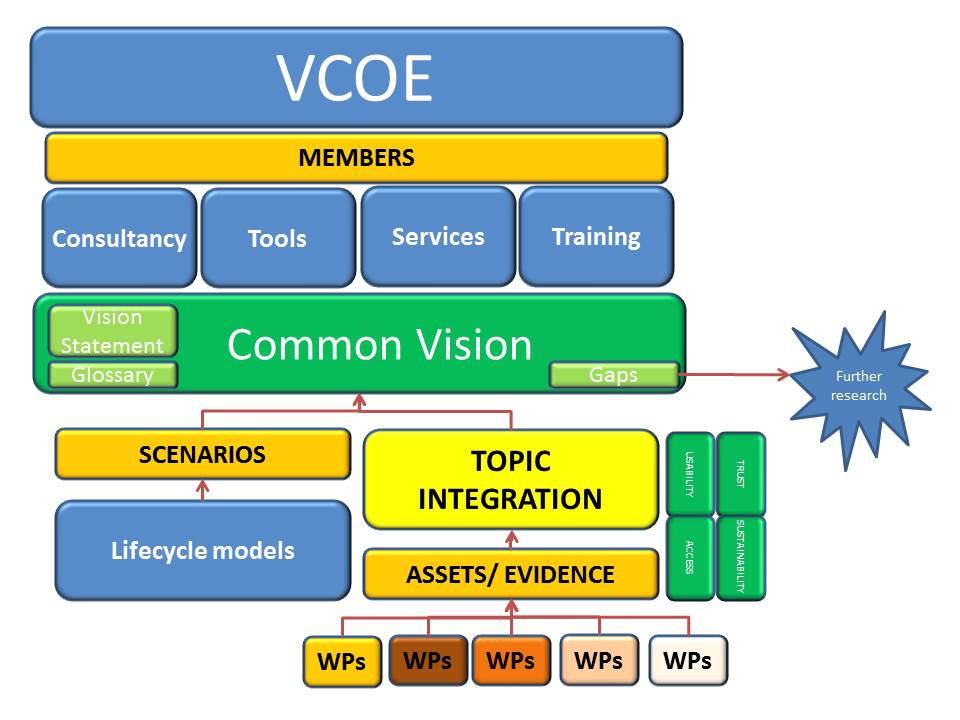 |
INTEGRATING THE VCoE BUILDING BLOCKS
The foundation of the VCoE
The Common Vision ([Download not found]) which we are developing in APARSEN has a very specific purpose, namely to bring coherence to the offerings of the Virtual Centre of Excellence (VCoE), helping to reduce or eliminate fragmentation in digital preservation. This coherence is expected to be a unique feature of the VCoE, and so it is important that it should be well founded on the range of work done within the APARSEN project.
Integration of the Common Vision in the VCoE Activities
In the context of APARSEN, the Common Vision will provide a unifying base shaping the activities of the Virtual Centre of Excellence, allowing its members to share a view of the challenges of digital preservation, as well as underpinning the offerings of the VCoE. However it is hoped that the Common Vision will enjoy wider influence and acceptance in the digital preservation and data holding communities.
The offerings of the VCoE have been grouped into four headings: Consultancy, Tools, Services and Training.
Consultancy
The Common Vision provides the basis of consistent and coherent advice and information about digital preservation. It is underpinned by the Asset base which has been collected across Aparsen works. Even the information about gaps provides us with a view of the “known unknowns” in digital preservation.
Tools
Tools provide fundamental capabilities such as creation of Representation Information, evidence about Authenticity, building business cases, estimating costs and planning preservation strategies.
Services
Services are widely applicable ways of sharing information and capabilities, and are used by many tools. They provide a way of sharing information and capabilities. APARSEN D21.1 reports on information collected on a variety of services, mapped to a landscape based on ISO 16363.
Some services can be developed as part of an international effort with other projects and stakeholders (i.e. InterPARES Trust and conflicting rights, International Council on Archives).
Training
APARSEN D43.1 contains a list of training topics. These are essentially consistent with the Common Vision presented in this document. However here we can present the training material within a coherent, comprehensive and consistent framework.
Launch of DP training portal for VCOE ([Download not found])
Dedicated to be of help to anyone interested in gaining initial skills or improving his competence in Digital Preservation (DP); specifically, the portal is designed to support students and trainers with three main services:
- Register of Digital Preservation curricula and courses in academia/Higher Education (HE) and Continuing Professional Education (CPE).
- Repository of training material in Digital Preservation.
- Online learning with courses in Digital Preservation.
RELEASE OF NEW DELIVERABLES
D13.2 Report about standardisation activities: progress to year 3 ([Download not found])
The establishment of a community spanning database can only be performed if all aspects of preservation are concentrated in one single place. Most of the standard related information was established in various research projects. The VCoE combines all the standard related knowledge, the applicable validation and certification procedures, under a common mind. Additionally this VCoE will be open to associations and standardisation bodies that are not yet part of the APARSEN network of excellence but are able and willing to contribute.
D22.3 Demonstrator set up and definition of added value services: part 2 ([Download not found])
Definition of an Interoperability Framework (IF) for Persistent Identifier (PI) systems and related services. The main goal of WP22 is to propose a model for interoperability at service level among existing PI systems without interfering with their internal organisation and policies. A demonstrator with PI systems for digital objects and actors was developed in to accomplish two main objectives:
- to test the feasibility of the IF model implementation;
- to measure the user satisfaction about some services across different PI domains and get refinement.
D31.1 Report on DRM preservation ([Download not found])
One of the primary goals of this work package was to examine approaches for dealing with digital rights and protection mechanisms, which are known as DRM or DRM systems, in memory organizations and other related institutions. It concludes with a summary of the different solutions, and compiles a catalogue of best practices such as:
- Keep the technical design simple,
- Use standard tools,
- DRM and Rights Policy
- Collaboration between rights holders and archives.
D35.1 Exemplar good governance structures and data policies ([Download not found])
Studies some current data governance structures and policies in Europe and beyond. Different topics – for example metadata requirements or licensing – were identified and surveyed. The report presents 13 recommendations in four categories:
GOVERNANCE AND FUNDING
- Sustainability of funding for DP and access should be assessed.
- When defining or implementing a DP policy, it should be considered as a core business activity.
DATA POLICY AND DATA POLICY ADHERENCE
- Cooperation should be stated within a policy on DP and access, describing the level of cooperation and possible agreements. Benchmarking is recommended.
- A policy should be made available on the web and be easily retrieved.
- A policy should include the reason for the policy and the target group.
- A policy should encourage open access to data and, if needed, solutions for handling privacy concerns.
- The mechanisms for updating the policies should be explicit.
- Incentives to participate should be provided.
- A policy should include risk assessment with contingency planning and an exit strategy.
DATA REQUIREMENTS, PRESERVATION AND RE-USE
- A policy should include the type of data addressed, elements dedicated to DP (file formats, metadata requirements, etc.), retention rules, reference to international standards and national legislation and guidance on how long data needs to be preserved.
- A policy should include specification of standards and interoperability.
OWNERSHIP AND RESPONSIBILITIES
- A policy should specify who to contact to preserve and share data, and who takes care that the policy is implemented.
- The license systems should be standardized and simplified.

